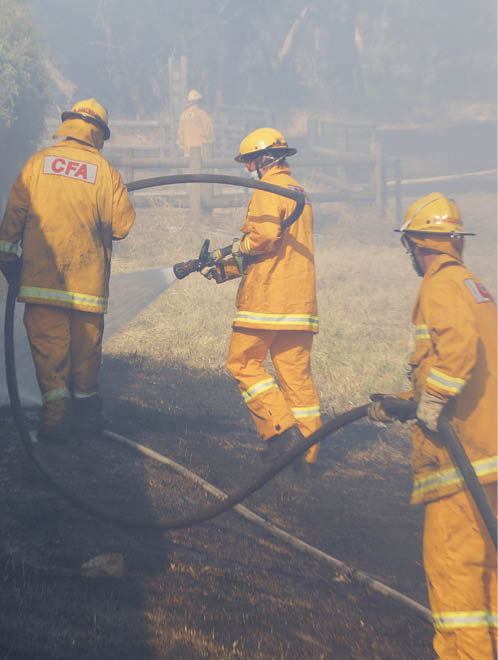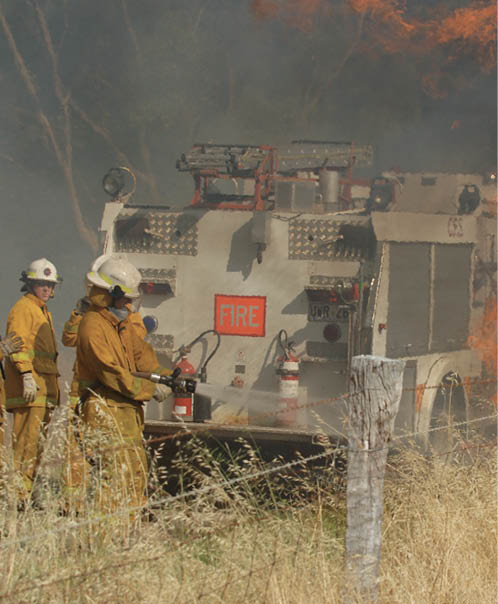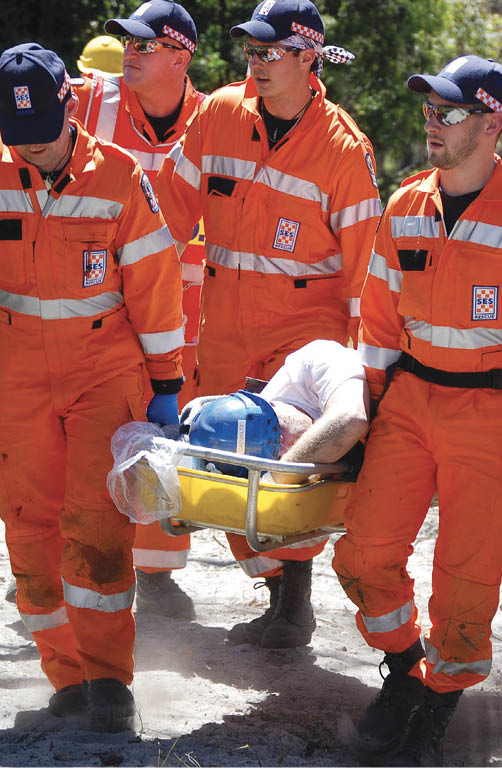While some of us spend lazy hot summer days in the pool, thousands of volunteer firefighters and support crews battle fires and floods across the country. And it’s not just in summer. Emergency services volunteers are there for us rain, hail or shine; 365 days a year.
In Australia, it is economically impractical to employ the number of emergency service workers to adequately respond to fires or other natural hazards such as storms and floods. As a result, Australia benefits from the benevolent support of around 235,000 emergency services volunteers, many of whom have followed in the footsteps of their family’s tradition to volunteer. This volunteering is a way of life for many in communities and has been for a long time. Volunteer fire brigades were established as early as the mid-19th century and emergency and rescue agencies, such as the State Emergency Services, have their origins in the Civil Defence established in the 1950s.
Volunteer brigades and units are managed by the volunteers themselves. This quasi-independence of volunteer groups on the one hand, and the corporate environment of paid staff in a regional, district or head office on the other hand, can sometimes cause tensions especially related to communication and authority along hierarchical structures. However, these tensions also occur within volunteer groups where effective leadership is a critical element for job satisfaction and for the retention of recruits. As a result of these problems many volunteer-based emergency service agencies experience high rates of volunteer turnover. In some cases, this is as high as 20 per cent volunteer turnover each year and it can be that as much as half of all new recruits leave within the first two years.
Volunteer turnover is an economic liability to volunteer-based agencies. Training, uniforms and protective equipment are expensive. More importantly, volunteer turnover has a bearing on operational capacity, flexibility, resilience and, to some degree, morale. Research on poor volunteer retention is valuable for the emergency sector. Finding out why this happens and developing ways to improve volunteer retention, has been the focus of a Bushfire and Natural Hazards CRC project with the University of Wollongong team of Associate Professor Michael Jones, Associate Professor Dominique Parrish, Vivien Forner, Dr Joakim Eidenfalk, Dr Senevi Kiridena and Dr Yoke Berry to investigate changes in volunteer leadership behaviour.
The research found that there was no need for a leadership program per se, as most agencies offer a variety of programs that meet the traditional needs of leadership development. Instead, the interdisciplinary team, all experienced in leadership, were keen to find other angles for developing changes in leadership behaviour. A Self Determination Theory was identified as a simple method to introduce to volunteer leaders.

Research helps to identify why volunteers leave and looks at ways to improve volunteer retention. Image: Country Fire Authority.

Emergency service volunteers are trained and equipped for when they are needed the most. Image: Brenton Edwards, CFS Promotions Unit.
Self Determination Theory recognises that there are three basic psychological needs people have in relation to optimal functioning and wellbeing:
- Autonomy – having the opportunity to express personal initiatives and ideas.
- Belonging – perceiving to be part of the group.
- Competence – feeling effective through positive feedback and appropriate training.
The ‘ABC’ of Self Determination Theory has been taught to people who interact with others in diverse environments such as homes, workplaces, schools, sports, universities and volunteering. Organisational research shows that when Self Determination Theory principles are applied in the workplace, employees and volunteers are more motivated, engaged, satisfied with their jobs and also less likely to want to leave the organisation.
The team developed a nine-week program, Inspire.Retain.Engage, that consisted of:
- one day of learning about leadership and Self Determination Theory and generation of ideas
- nine weeks of on-the-job application and active reflection on the principles of Self Determination Theory with the support of an online mentor
- a final day of reflection and sharing within communities-of-practice.
The program was piloted with volunteer leaders in 2014 with the NSW State Emergency Service and the NSW Rural Fire Service. It was delivered again in 2016 to volunteer leaders and staff of Victoria State Emergency Service and Queensland Fire and Emergency Services.
In terms of outcomes, the statistical effectiveness of the program on behavioural change in the participants, and job satisfaction and turnover intention of team members, showed that the Inspire.Retain.Engage training and the use of Self Determination Theory had a positive impact on the retention of volunteers.
More longitudinal measures would be beneficial in providing an in-depth evaluation of the Inspire.Retain.Engage program. The team is satisfied that the simple tools offered to volunteer leaders, staff and their organisations (the program was made available to all emergency service agencies in Australia) will be beneficial to their lives, to their agencies and to their communities.



